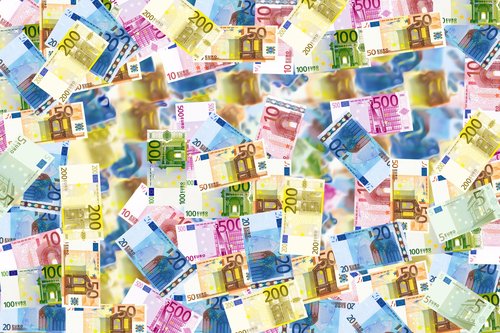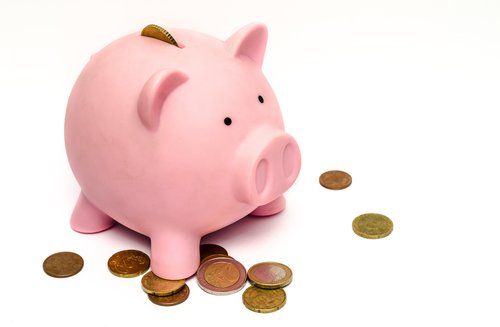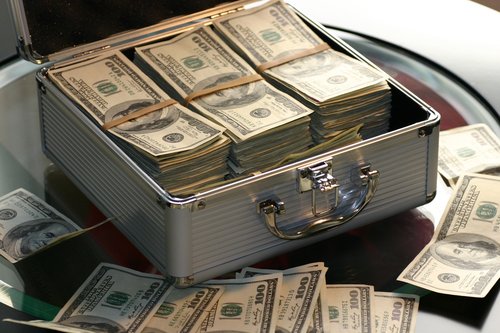Four Things Even Your Accountant Doesn’t Know About Central Bank Balance Sheets
Wednesday, 27 February 2019By Robin Darbyshire
If you happen to be interested in central banks and banking, you might occasionally look at their financial statements. At first glance a central bank[1] balance sheet looks very similar to those of commercial banks, they have deposits and make loans. Many accountants and auditors initially approach a central bank as though it were a commercial bank. Although this is guaranteed to irritate a central banker, it is not entirely wrong as many of the financial instruments employed by central banks are also used by other financial institutions, albeit for different purposes. Central banks hold their financial instruments for policy usage, as defined in their functions, not for generating income. Central banks may actually incur costs or losses in their policy operations. Indeed, there is a concept amongst central banks of good losses and bad profits.
With the aim of explaining some of the special features of central banks, this article describes four major items in a central bank balance sheet.
Banknotes

For individuals and entities, cash, in the form of banknotes, is an asset and the most liquid and obvious one. However, for a central bank, it is a liability, as the bank is the issuer. A banknote is a claim on the issuer, as the Bank of England explicitly acknowledges on its notes with the words ‘I promise to pay the bearer on demand’. Other central banks do not include such wording but will all honour their own notes when presented to them[2].
The issue of banknotes is, with a few exceptions, an activity and responsibility assigned to central banks and monetary authorities, so is not a common item on commercial bank balance sheets.
Although individual banknotes have a relatively short life, extended with polymer notes, the aggregate note circulation is largely permanent, but varies through the year, with peaks typically around holidays, when people tend to withdraw more cash. As alternative forms of payment are employed by the public, the growth in banknotes is slowing and indeed in Sweden, the volume of banknotes is decreasing.
Banknotes are commonly issued via commercial banks who buy them from the central bank at face value and then issue them to their customers, over the counter or via ATMs. Banks typically withdraw notes in the morning and return surplus notes at the end of the day. Central banks have regimes for managing the note circulation in their jurisdictions and these are essentially logistic matters rather than financial, as they include such items are transport and storage.
Bank Deposits

Central bank balance sheets normally include deposits from banks as do many commercial banks. These may be in the form of deposits or repos. However, the deposits at the central bank are held for different purposes to those at a commercial bank, which would typically form part of the funding arrangements. Deposits at the central bank may be of several types. The first, common to nearly all, relate to the settlement of interbank balances. All national payment systems, whether real-time or on a net basis, which enable the public to make their payments, generate transactions between banks. For example, if someone settles a utility bill, they will transfer funds from their bank account to that of the utility. If this is not the same bank as that of the payer, the recipient bank has a claim on the payer’s bank. At some point, it is necessary to settle these interbank balances. This is typically done using commercial banks’ accounts at the central bank. Such balances are typically quite low at the end of the day when the balance sheets are prepared, but during the day may be much higher, Central banks may also grant intra-day overdrafts to enable payments to flow.
This inter bank settlement is not generally noted by the public, who take the operations of the payment system largely for granted, only noticing when something goes wrong! Such a smooth functioning of the systems is part of the central bank’s function.
Other bank deposits at the central bank may include minimum reserves, which are sums the commercial banks are required to hold by law at the central bank. They will typically be set as a percentage of the commercial bank’s liabilities as reported on their balance sheet. These deposits serve a monetary policy purpose, in controlling the amount of the money supply, since they reduce the commercial bank’s ability to lend funds and so create money. They may also serve a prudential purpose, since such reserves provide a liquidity buffer available to meet depositors’ withdrawals.
Another monetary policy instrument using bank deposits is through the central bank offering deposit facilities on which it pays interest. Such a rate will provide the lower bound of a corridor for the short term (typically overnight) interest rate, the upper bound being set by the rate at which the central bank will lend. The mechanism or rationale for this is that a bank with surplus funds will demand a higher rate from a commercial bank than they can obtain from the central bank to compensate for the increased risk.
Loans And Advances To Banks

Many commercial bank balance sheets show deposits with other commercial banks, a category that also appears on a central bank balance sheet. Central banks make advances to commercial banks as part of their monetary policy operations. The rate at which they lend determines the short term interest rate. The lending is typically in the form of repos for a fixed period, say 14 or 30 days, supplemented if necessary, by overnight operations. Central banks try to keep the overall market in a position of a shortage of liquidity, so that banks need to borrow from the central bank. The liquidity position in the market varies from day to day and month to month and central banks manage this with their lending, and possibly also deposit taking.
On rare occasions, central banks may give financial assistance to commercial banks. This may be to cover short term funding problems or longer term as part of a formal rescue.
Foreign Reserves, Including Gold

Suppliers of imports do not generally want to be paid in your domestic currency[3] but in their own, or in a recognised easily tradeable currency such as US dollars. Countries, therefore, need reserves of foreign currency to meet their imports and any other foreign payments, such as loan servicing. In contrast, large exporting countries tend to accumulate foreign currencies. With many economies, the foreign reserves exceed the level simply needed to meet immediate payment, and the foreign reserves become more of an investment portfolio. These assets are commonly held by the central bank, which manages the currency composition, typically US dollars, euro, and Yen, with a mixture of other currencies including those of neighbouring countries, as well as the assets in which the funds are invested. These will typically be government securities and other high-quality securities.
Many central banks include gold as part of their reserves. Some of this may be historic sentiment and also because the population still hold gold in high regard. However, a major reason for holding gold is to provide a hedge against movements in the exchange rate of the other currencies held. When the main reserve currencies, USD, Euro, and Yen fall in value, gold tends to rise in price.
The gold held by central banks is not in the form that you find in jewelers, but in the form of bars with very high purity, typically 99.9%. Such gold is called monetary gold and qualifies for inclusion in the country’s reserves as defined by the International Monetary Fund. Whilst day to day transactions in jewelers and other retail activities are typically in ounces, as evidenced by the price being quoted in ounces, central banks typically hold gold in tons.
Conclusion
The title of this piece refers to 4 things. The observant will have noticed that I have mentioned more than this.
I have adopted the accountant’s practice, as seen in balance sheets, of having 4 headline items and then explaining them in the notes. I hope the reader will accept this!
Further Reading
Accounting In Central Banks D Bholat, R Darbyshire Bank of England working paper 2016
[1] The term central bank is used in this article to cover central banks and similar organisations such as currency boards.
[2] Some banks impose a time limit on their notes and will not honour them after a certain date. Other central banks will honour all their notes.
[3] Any individual currency is only usable in that country. So, the supplier of your imports only wants your currency if they plan to buy items from you or invest in your country.